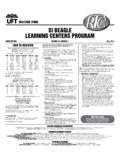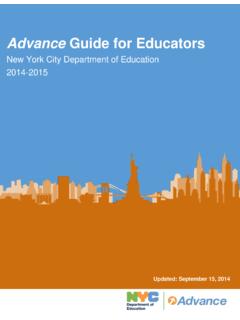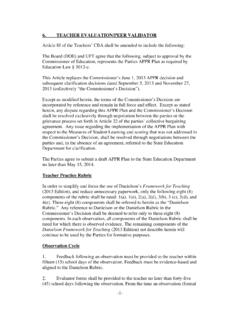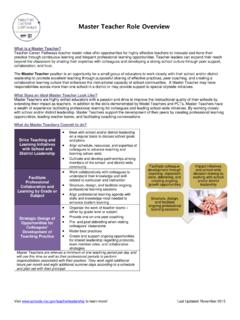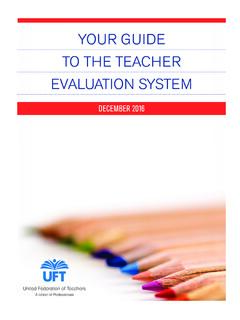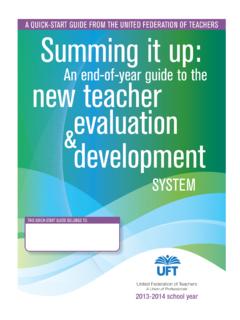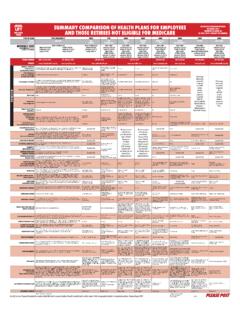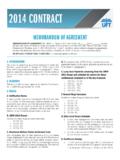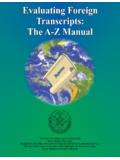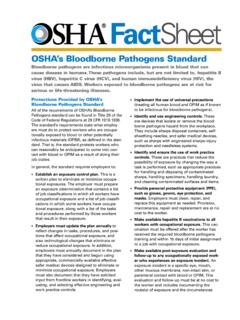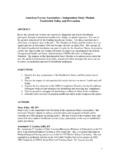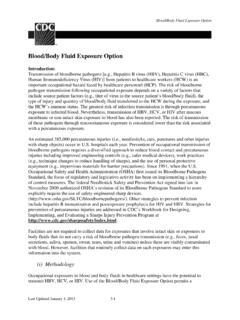Transcription of DIAPERING/TOILETING
1 Para Protocols DIAPERING/TOILETING In response to requests from members regarding proper practice for diapering and toileting protocols for students in New York City schools, the United Federation of Teachers Safety and Health Department developed the following guidelines in order to protect the safety of both students and staff and to ensure that proper facilities are used for these activities. Due to the wide range of disabilities, both physical and mental, and the various ages and physical sizes of students in the NYC school system who require these services, these procedures should be tailored to each individual student s specific needs.
2 It is strongly recommended that two adults always be present when performing these tasks. DIAPERING Students may require diapering due to health, physical or mental problems which necessitate the use of diapers. These students may require changing either on a daily, scheduled basis or on an as needed basis. In any event, these tasks should be performed with dignity and respect for the student and in a private, safe, secure setting. The Basic Procedure When you receive an assignment to diaper or toilet a student, it is important to have a discussion with your supervisor about the case history and specific needs of the child.
3 Toileting and diapering a student is a significantly different experience than toileting and diapering your own family member. Contact your school nurse and occupational and physical therapy providers and request child-specific training and instructions. The student you are working with may have special needs requiring special procedures. This information should be included in the IEP or 504 forms (the classroom teacher has these forms) which are tailored specifically for the student with whom you are working.
4 This is extremely important because it will provide very important information regarding the special needs and equipment necessary for the student. It should also include goals and objectives such as whether the student is progressing towards independent toileting. If the IEP is incomplete, you should have a conversation with the teacher. Inspect the designated changing area and make sure that all of the necessary equipment and supplies are available in the area ( gloves, wipes, water, soap, etc.)
5 Bring student to changing area 1 Prepare table/surface where student will be changed by wiping with a sanitized cloth and/or by placing protective paper on the table surface. Wear appropriate Personal Protective Equipment gloves (sleeves and apron if necessary). Please refer to the charts at the end of this document for the FAMIS numbers for these items. Talk to student about what you are doing Transfer student to changing table (*see equipment). Remember, if a transfer is needed, plan the transfer with the staff and student with whom you are working.
6 Remove soiled diaper and place in a covered waste receptacle Clean student using wipes, soap and water Dispose of soiled gloves and put on clean pair of gloves Place clean diaper on student Transfer student from changing area Remove paper and clean surface with Sani-cloth The changing of gloves and cleaning of the surface is to avoid cross-contamination of infected or contagious material and is a safe handling procedure which should be practiced. The proper removal and disposal of gloves should be included in the bloodborne pathogen training offered at your school.
7 Equipment/Supplies The following list of equipment and supplies identifies the minimum necessary to provide the safest environment for both students and staff. Running water, soap and towels Adjustable changing table. At the minimum, an unbroken, clean, sturdy surface off the floor should be provided; you should NOT have to diaper on the floor or on a desk. Lifting device. Depending on the size and mobility of the student, some equipment may be needed to assist in the safe handling of a student.
8 This may include: Hoyer lift, transfer belt, transfer board, and electronic lifting device with appropriate slings. Discuss with the IEP team the importance of specifying on the IEP what lifting and transferring equipment is needed. Privacy curtain Gloves non-latex in different sizes and lengths to appropriately fit all staff. Sleeves, aprons, masks (as required by task) A covered and lined refuse receptacle for waste and contaminated PPE Sanitized and disinfectant cleaning cloths for surfaces Chucks and/or table paper Supply of soap, toilet paper, wipes and paper towels Paper towels Facilities While we would want the ideal for all staff and students in the form of modern, spacious changing areas, that is not the reality.
9 Many of our schools are old and were not built to 2 accommodate the various needs of our students. However, this does not mean that our students should be treated with any less dignity and respect. Schools should have these basic facilities: Running water Handicapped accessible stalls Adequately ventilated Storage cabinet (locked) for supplies that is accessible to changing area TOILETING As with diapering students, toileting is another task that requires a certain amount of equipment and supplies in order to ensure the safety of both students and staff.
10 There are different reasons why a student may require assistance with toileting, including physical and mental impairment as well as toilet training in the early grades (pre-K and Kindergarten). The Basic Procedure Escort student to changing area Prepare toilet by wiping with a sanitized/disinfectant cloth and/or placing protective paper Put on PPE gloves (sleeves and aprons if necessary) Talk to student about what you are doing Assist student with clothes Transfer and/or assist student to toilet If required, stabilize student on toilet seat Clean student when finished Dispose of soiled gloves and put on clean pair of gloves Transfer student from toilet Additional Recommendations 9 If you are involved in toileting and/or diapering students, you must receive OSHA bloodborne Pathogen Training.

